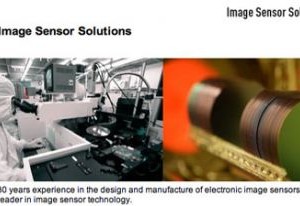
Rochester, NY—Kodak, which posted third-quarter sales of $1.46 billion, a 17% decrease from the year-ago quarter, announced on November 7 it completed the sale of its Image Sensor Solutions business to Platinum Equity, in an effort to close the gap on its year-end cash target. That target was based on selling assets, including digital imaging patents.
During the company’s digital transformation, Kodak has struggled to maintain operating cash flow as it gets its core digital businesses on track, including digital cameras and devices, and the bright spot in its portfolio, its consumer and commercial digital printing businesses.
Recently the company warned—and financial analysts agreed—that it would have trouble staying in business if it couldn’t complete a key patent sale or raise funds by selling debt. The sale of its Image Sensor Solutions, a unit within Kodak’s consumer digital imaging segment, was part of that strategy to raise cash before the end of the year. While not disclosing the amount of the deal with Platinum Equity, Antonio M. Perez, Kodak’s chairman and CEO, said Kodak expects to end the year with $1.3 to $1.4 billion in cash, a range that assumes Kodak will sell $200 million in noncore assets.
“Image Sensor Solutions is a business that is well-positioned in the high-performance imaging markets in which it participates,” said Pradeep Jotwani, president of Kodak’s consumer digital imaging group and senior vice president of Kodak. “This sale maximizes shareholder value by obtaining a full and fair valuation for this business, and allows Kodak to increase its financial flexibility.”
Platinum Equity is also acquiring a 263,000-square-foot facility in Rochester that houses manufacturing and research facilities, and the deal allows that Kodak will continue to have access to its image sensor business’s technology.
Despite the ongoing drain on Kodak’s cash holdings, Perez remains optimistic: “We now expect to end the year with as much as $1.4 billion in cash, before any proceeds from the sale of our digital imaging patent portfolios, reflecting the company’s seasonal generation of cash in the fourth quarter,” Perez said. “Remember as well that the eventual sale of our digital patent portfolios will materially increase our cash balance and help to accelerate our efforts to complete the transformation. What’s more, 2011 represents the peak year for cash usage by our business units during this transformation.
“In 2012, we expect cash usage attributed to the operating businesses to decline notably, stemming from significant profitability improvements in consumer and commercial inkjet as well as digital cameras. We remain confident that we are creating a digital Kodak that will help our customers grow their business through high-quality and innovative products and services.”
Analysts, however, have differing opinions on the consequences of Kodak’s inability to more quickly transform into a sustainable digital company.
“Kodak executives never thought this could ever happen to them, so they didn’t prepare,” Jeff Kagan, an Atlanta-based wireless and telecom industry analyst told the Washington Times. “Kodak should have seen this coming over the last decade. They should have put their brand name in the mix and on every wireless device.”
Moody’s credit-rating firm said before the Platinum transaction that Kodak could run out of money in the second or third quarter of 2012. It already had downgraded the company’s credit rating.
“Trouble is, Kodak’s operations consume significant cash in the first half of every year, and the company’s third-quarter patterns also tend toward cash usage . . . without material cash inflows over the near term from intellectual property sales or licensing agreements, or the additional secured funding that the company is currently exploring, the probability of a debt restructuring mounts,” Moody’s analyst Rick Lane wrote in a report.
Kodak’s Image Sensor Solutions has been at the forefront of breakthroughs in the film industry for 30 years, including developing technology for studio photography cameras, earth-imaging satellites, traffic monitoring and DNA-sequencing systems. Right before its sale, it was announced the unit would be showcasing several new high-performance products at the Vision trade show, held November 8-10 in Stuttgart, Germany. “This broad set of new products, based not only on key core technologies but also leveraging a new high-performance imaging platform, demonstrates Kodak’s continued commitment to supply the most advanced products and technologies for these important markets,” announced Chris McNiffe, general manager of Kodak’s Image Sensor Solutions. The new products, which include the Kodak KAI-16070 16 megapixel image sensor for the 35mm optical format and the Kodak KAI-16050 16MP image sensor for the APS-H format, are said to provide “significant advances in image quality, resolution and sensitivity. kodak.com





